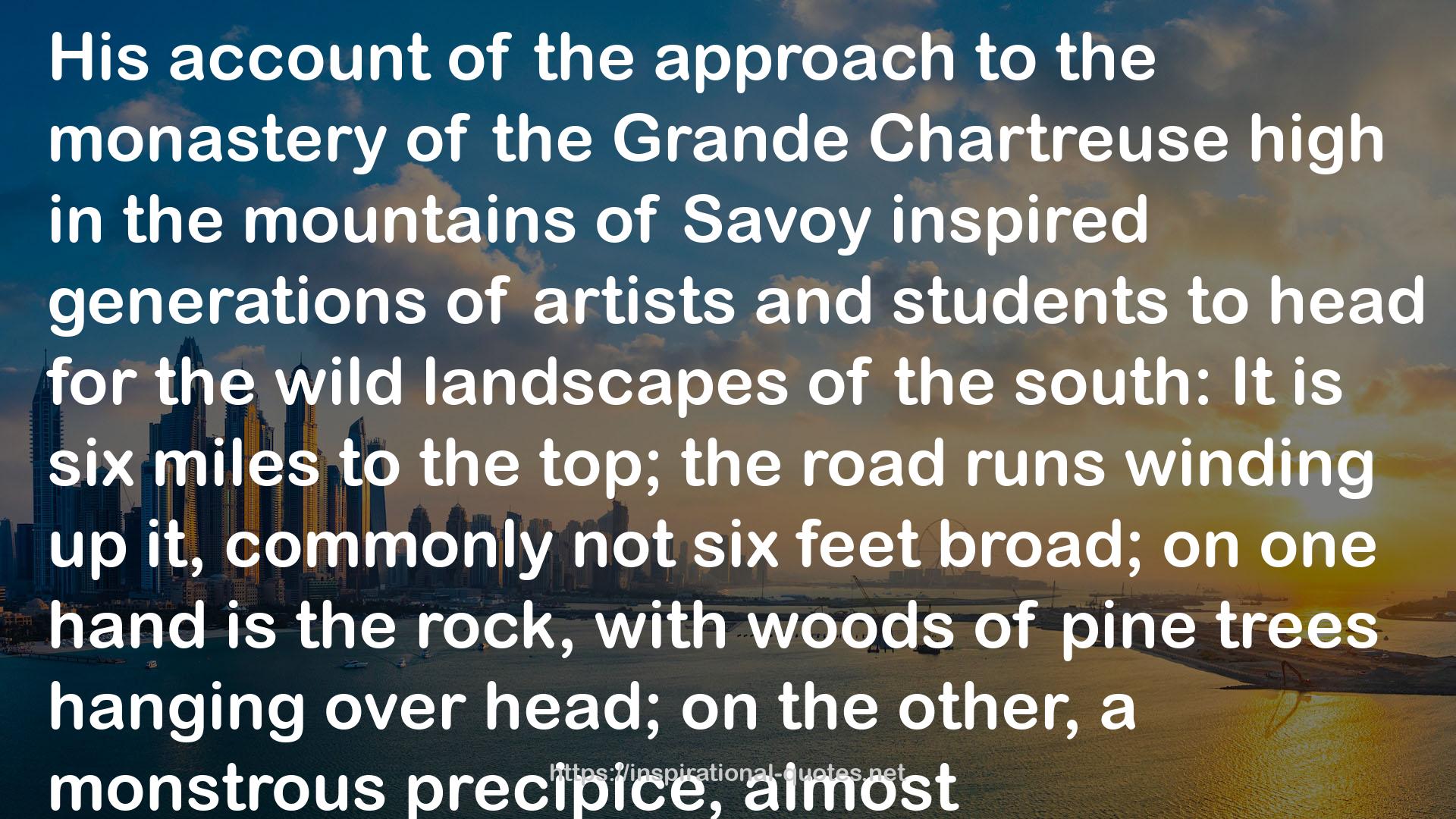" His account of the approach to the monastery of the Grande Chartreuse high in the mountains of Savoy inspired generations of artists and students to head for the wild landscapes of the south: It is six miles to the top; the road runs winding up it, commonly not six feet broad; on one hand is the rock, with woods of pine trees hanging over head; on the other, a monstrous precipice, almost perpendicular, at the bottom of which rolls a torrent, that sometimes tumbling among the fragments of stone that have fallen from on high, and sometimes precipitating itself down vast descents with a noise like thunder, which is still made greater by the echo from the mountains on each side, concurs to form one of the most solemn, the most romantic, and the most astonishing scenes I ever beheld.17 This is a highly influential early usage of the word ‘romantic’ to describe mountain scenery. It is also a classic instance of what Edmund Burke classified as a ‘sublime’ as opposed to a ‘beautiful’ scene, the distinction being that the sublime creates a reaction of awe with an element of fear, in this case created by the raging torrent, the noise resembling thunder, the echo from the mountain walls. For Wordsworth and Jones, as for Gray and Walpole before them, the approach to the Grande Chartreuse was one of the most ‘astonishing’ scenes that they ever beheld. Astonishment – being struck dumb with awe – was the hallmark of the sublime. "
― Jonathan Bate , Radical Wordsworth: The Poet Who Changed the World
